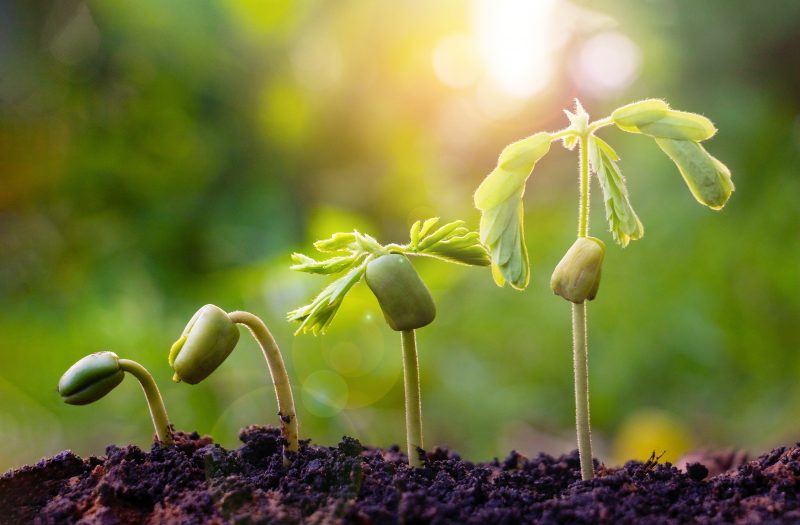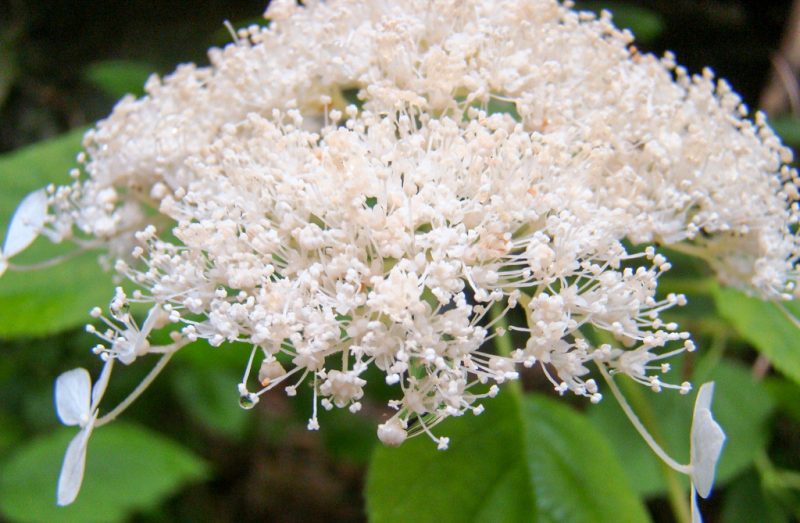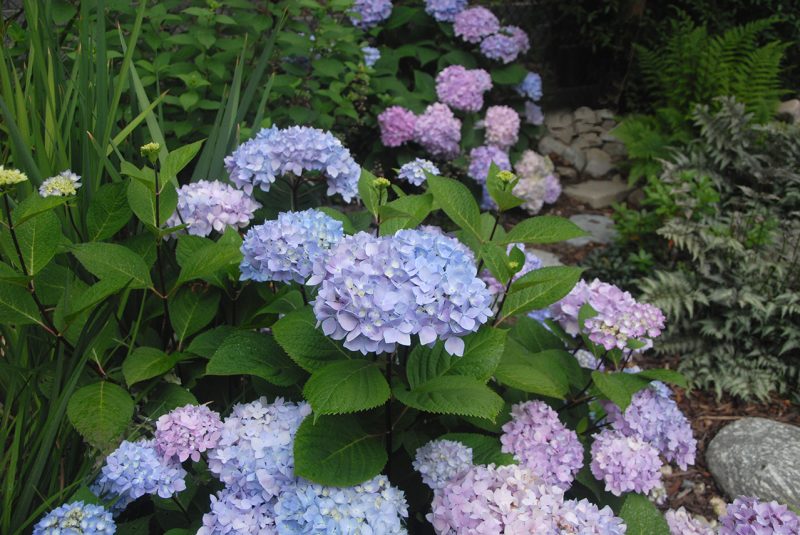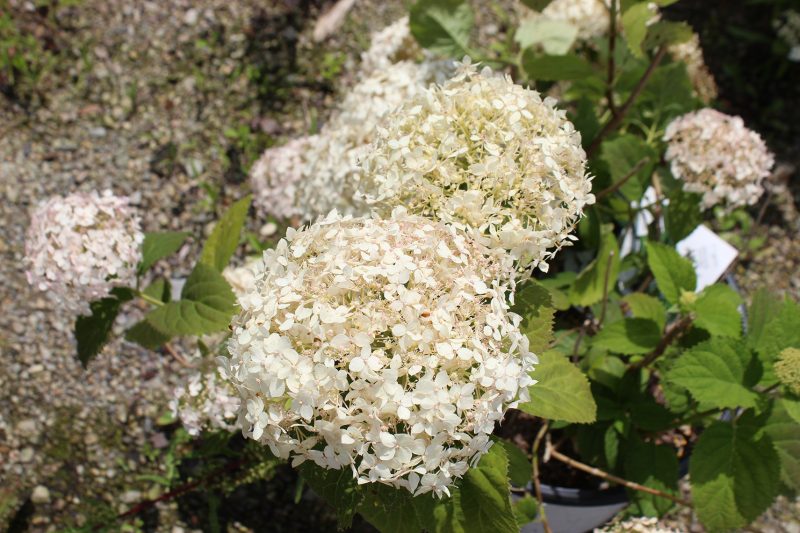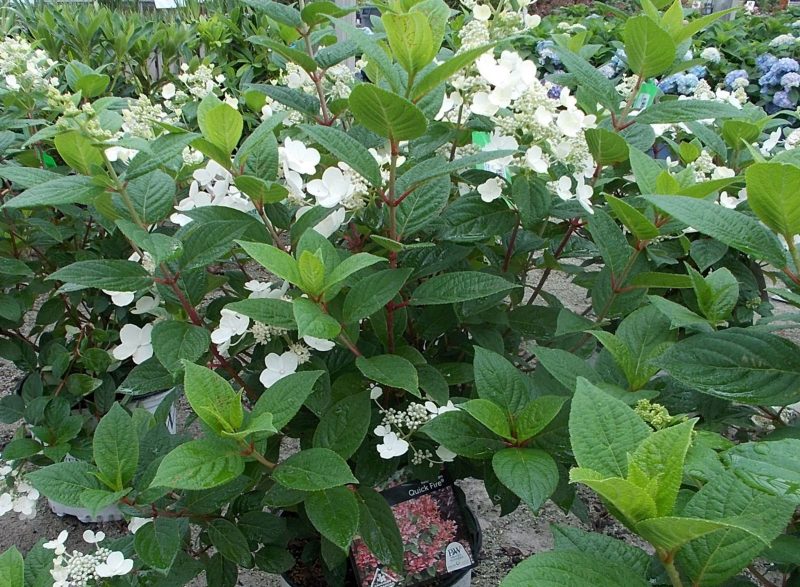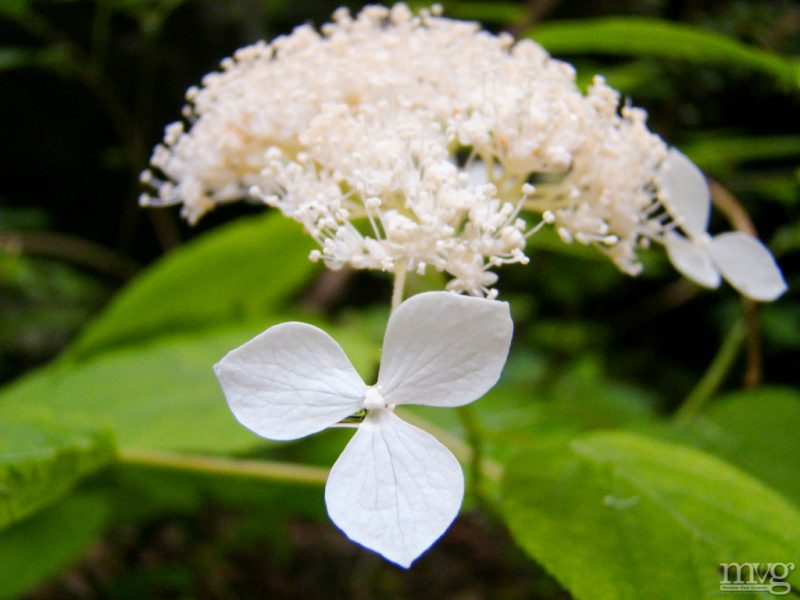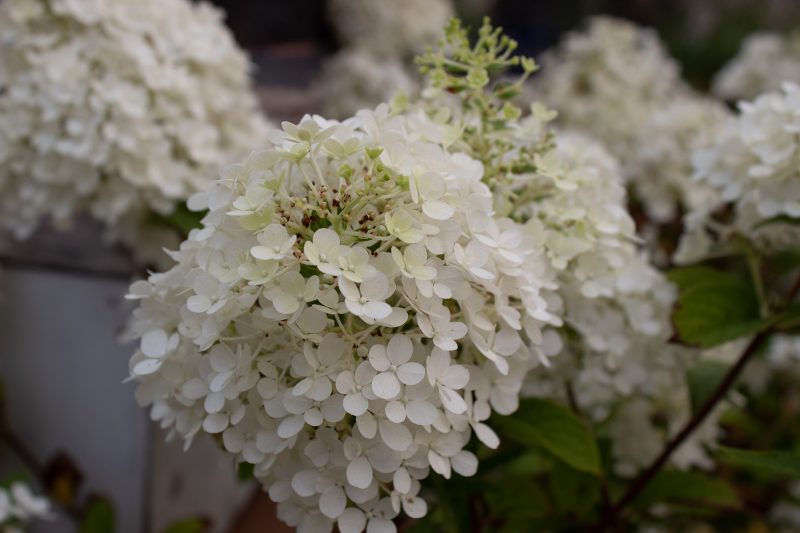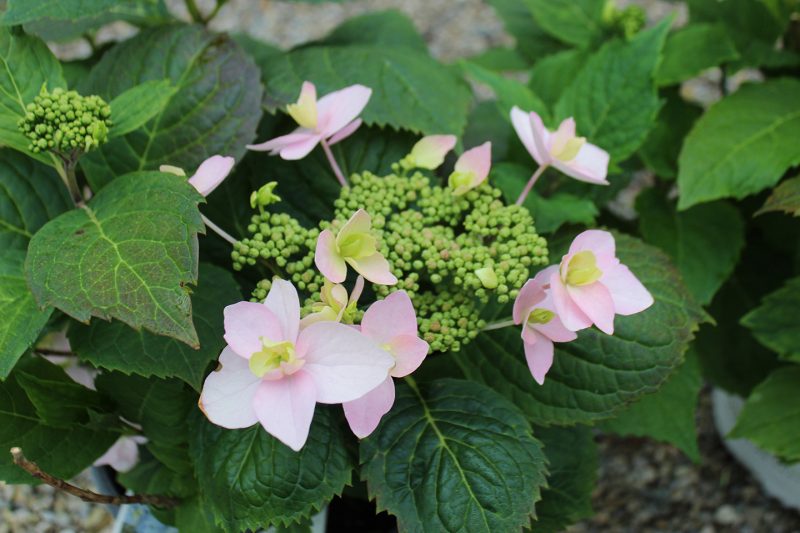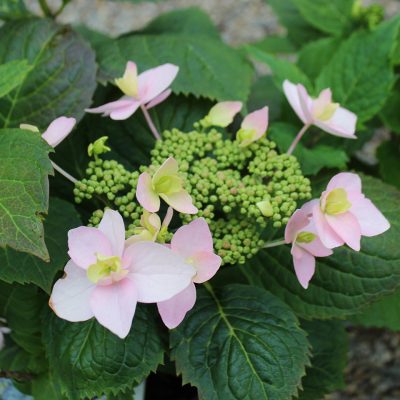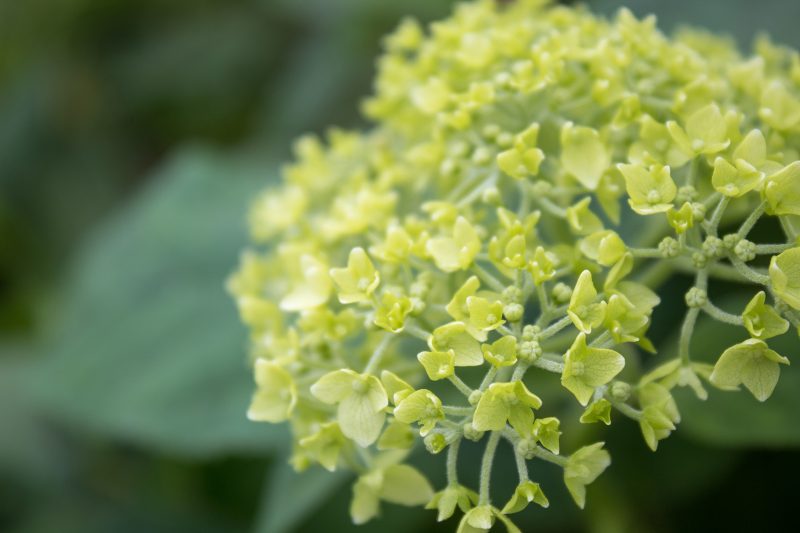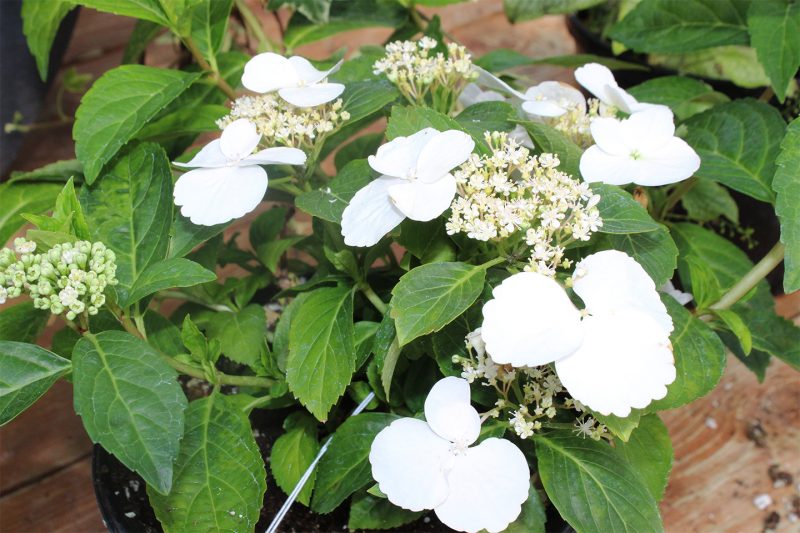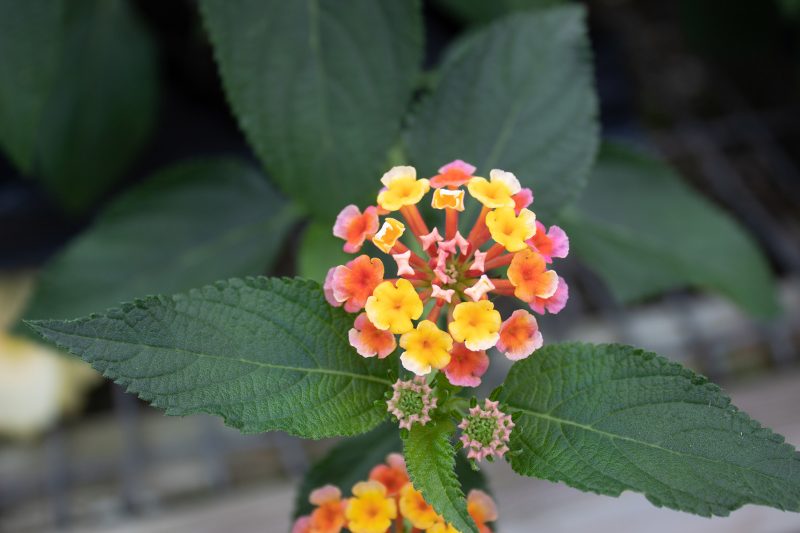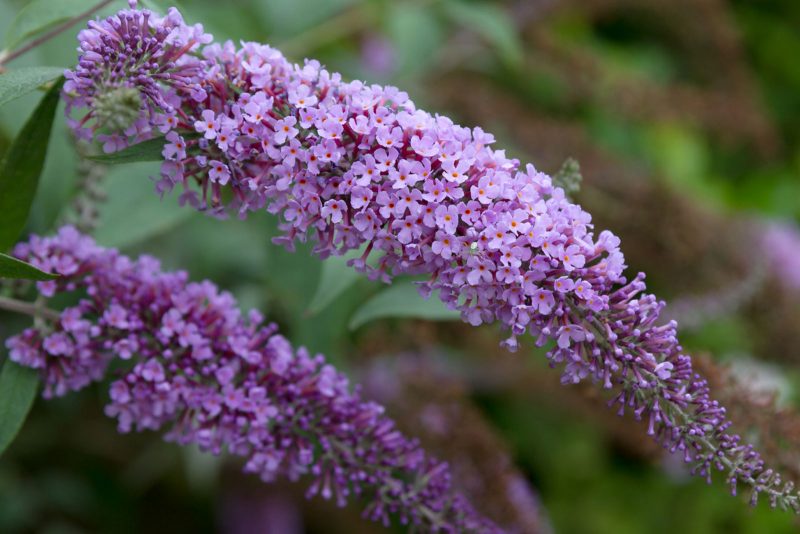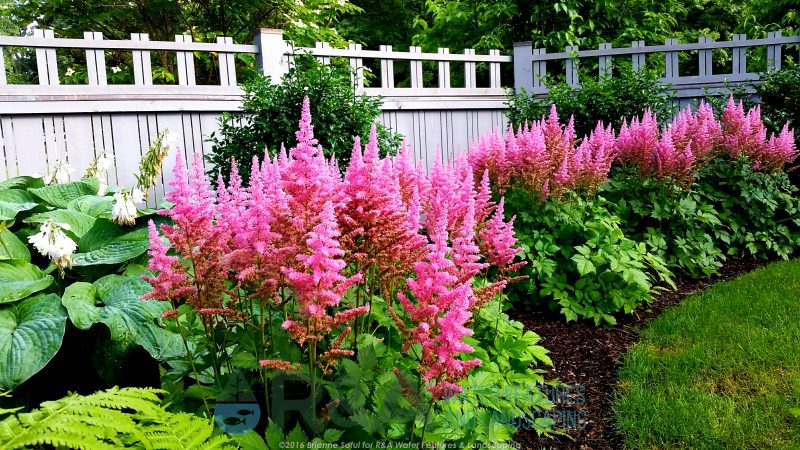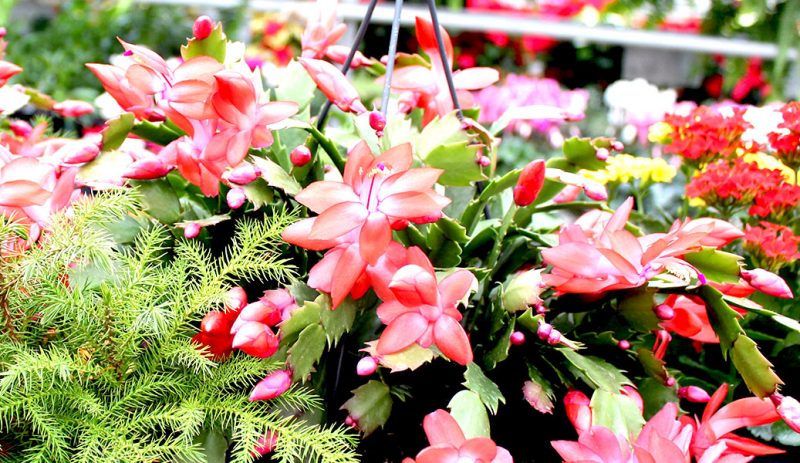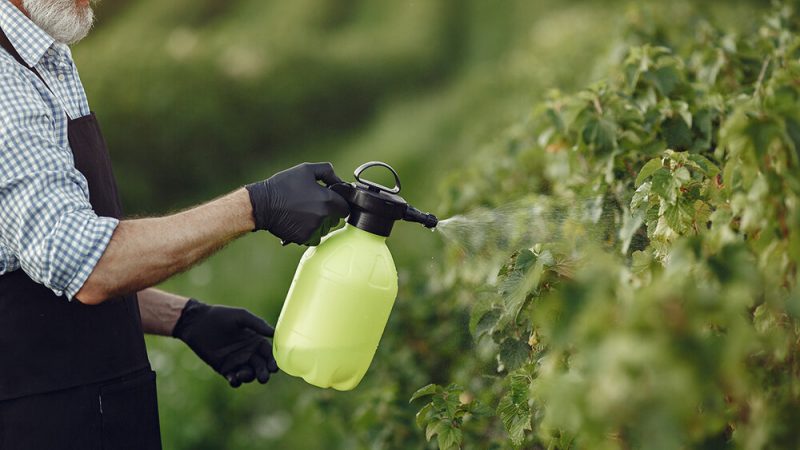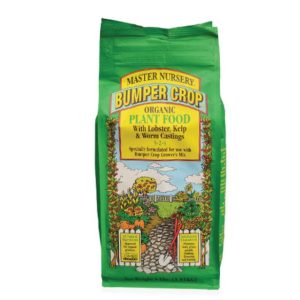One of the most interesting aspects of hydrangea is that some varieties have flowers that can change color.
This is due to soil chemistry, with pH levels able to affect the flower color of bigleaf and mountain species, H. macrophylla and H. serrata.
Typically, flowers are blue in the soil of high acidity, and mauve to pink in alkaline soil. Some shrubs will even show all three colors at once!
If unsure of your soil’s pH, it’s wise to test before planting.
To alter pH levels and manipulate flower color, treat the soil well before the flowers bloom, starting in late summer and continuing the following spring.
To encourage blue blooms, grow in acidic soil with a pH of 7-3-3. Jack’s Hydrangea Plant Food 7-3-3 is safe and easy to apply.
Incorporating naturally acidic materials such as coffee grounds, peat moss, pine needles, oak leaves, or sawdust will increase levels slightly and slowly.
Or, you can increase soil acidity by adding aluminum sulfate, ammonium sulfate, or a soil acidifier.
For mauve to pink blooms, more alkaline soil is needed with a range of pH 6.0-6.2.
Garden lime is the easiest way to raise the soil pH (alkalinize it). Apply at the rate outlined in package specifications.
Retest your soil periodically to monitor the effects of any soil amendment – over time, the pH will revert to its original levels.
And if you want to maintain a certain pH level, the soil should be tested annually.
Also, it should be noted that species with true white or cream flowers, like the oakleaf, H. quercifolia, will stay their original color regardless of the soil’s chemical composition.
Source: Gardeners Path: https://gardenerspath.com/plants/ornamentals/grow-and-care-for-hydrangeas/
